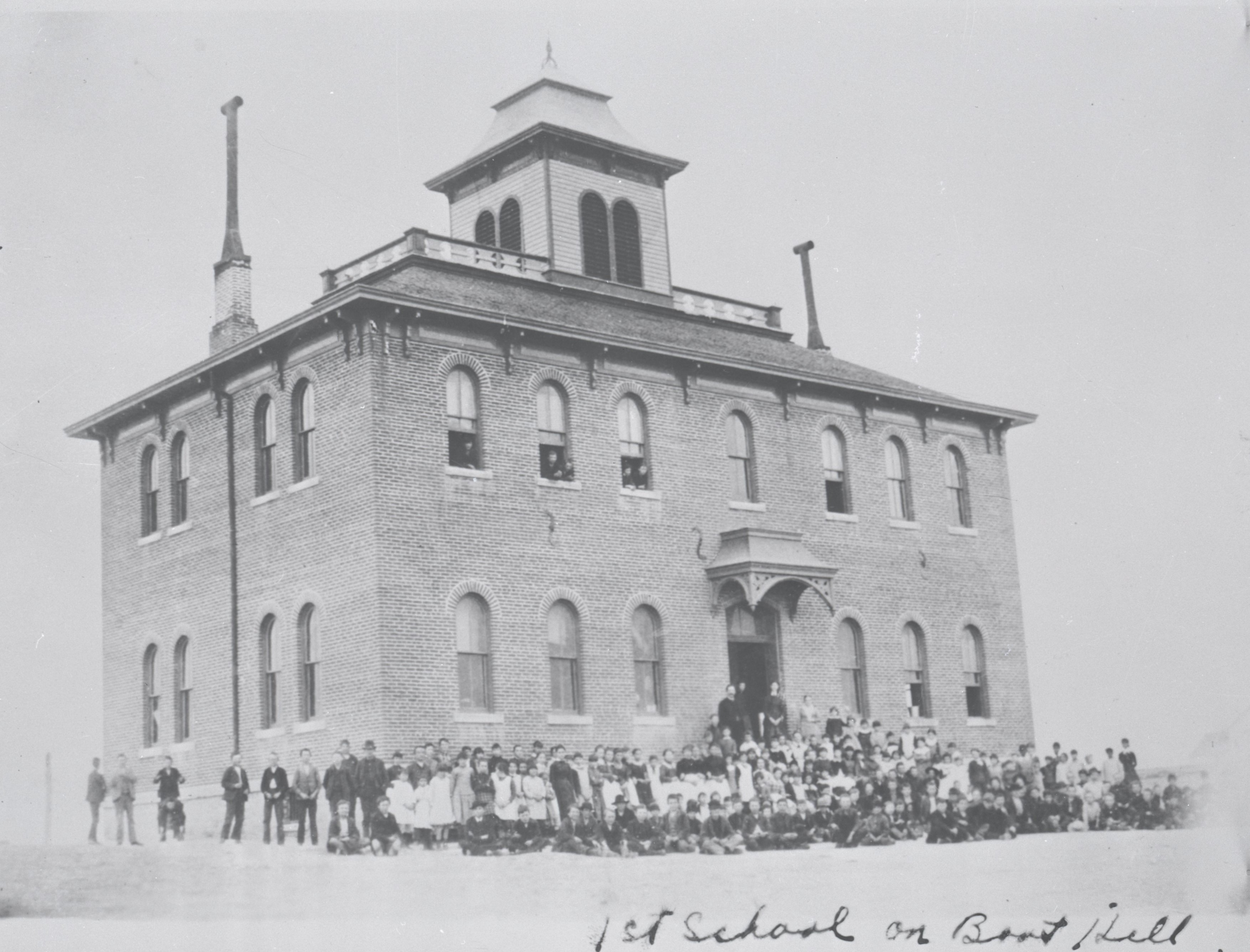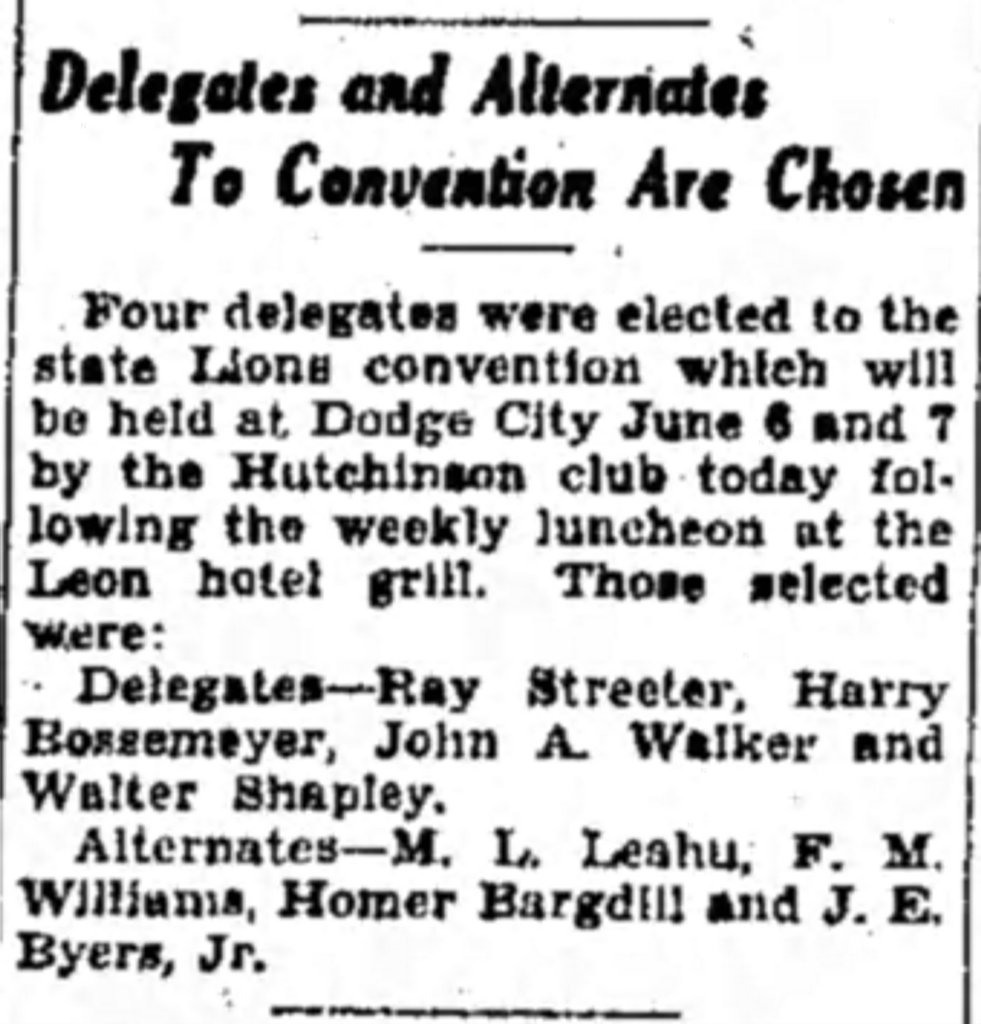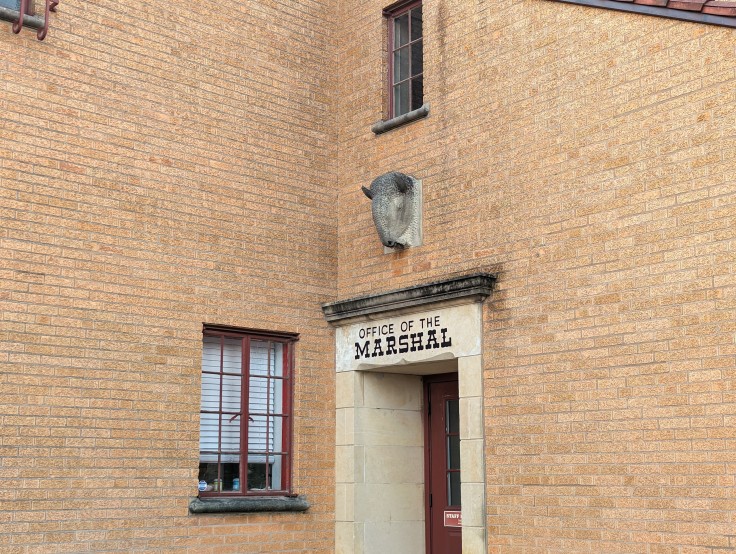501 West Spruce Street
Until very recently, I hadn’t spent much time on this building because I thought I knew all about the history of Boot Hill and so did everyone else. I was wrong.
It’s pretty common knowledge that the Boot Hill Cemetery was in use from 1872 until 1879 but it wasn’t an official cemetery and the body count has been exaggerated many times over by enthusiastic storytellers. People of stature in the community were buried in the cemetery at Fort Dodge. Those who died suddenly (with their boots on) as well as people without money for proper burials were illegally laid to rest on Boot Hill.

The more conservative legends say there were some 36 cowboys and one woman buried on Boot Hill. Alice Chambers, who died of natural causes on May 5, 1878, is believed to have been the last person buried on Boot Hill.
As Dodge City grew, it became clear that something had to be done about the makeshift cemetery, which occupied prime real estate. Prairie Grove Cemetery was established in the 1400 block of Avenue C extending west toward Avenue B in 1878. In those days, that area was far removed from the city center.
Herman Fringer and Samuel Marshall bought the Boot Hill property in the Spring of 1878 with plans for development.

The approximately 20 remaining bodies were ordered to be removed from Boot Hill but that would be a really disgusting job during the summer months. In January of 1879, the City agreed to pay $100 to have the bodies moved to Prairie Grove with the provision that the work be completed within 60 days.
The original Third Ward School, built from 1879 to 1880, was a 30’ x 60’ two story brick building that stood at the top of the hill.

According to Robert M Wright, the original school cost $6,300 to build and the roof was already leaking a year after completion. After five years, it was braced by rods. This poorly constructed building was condemned in 1889 and torn down to make way for its bigger and better replacement.
The second and more ornate Third Ward School was overcrowded almost as soon as it opened for the 1890-91 school year.

For several years, the building was used as a high school and ward school combined. Dodge City didn’t build a dedicated high school until 1914. Overcrowding continued and Lincoln Elementary School on Cedar Street was built as a spacious and modern replacement. I’ve read in a few places the second Third Ward School was demolished in 1927 but it appears that didn’t occur until 1928, when Mann and Company began working on plans for a new City Hall.

Dr. Oscar H Simpson, Dodge City’s dapper dentist, took up sculpting in his later years and used Joe Sughrue as a model for what would become the famous cowboy statue on Boot Hill. Most of you know that Sughrue nearly suffocated when his breathing straw was pinched during casting of the cowboy’s head. The statue was unveiled by Simpson’s daughter, Betty, on November 4, 1929.
There’s a lot of confusion about what all took place on this date during the Last Roundup. Ham Bell organized a giant five-section parade with four bands plus a drum corps. School was dismissed so kids could ride their decorated bicycles in the parade, which was led by the Dodge City Cowboy Band under direction of Otero Beeson.
During the celebration, the cowboy statue was dedicated and the cornerstone was laid for the new City Hall. Newspaper articles about the event were poorly written so people have taken them to mean the building was completed. In reality, construction was just beginning at that time.
It should be no surprise that Julian Parham’s company was awarded the building contract. Sadly, Parham died on December 31, 1929 after suffering severe burns in a gasoline stove explosion at a tourist camp in Oklahoma. This photo was taken before the roof was completed.

Dodge City Fire Department found themselves in a bit of a pickle while waiting for their new home to be finished. The lease was up on the place they had rented for several years so they were forced to occupy the new building while it received finishing touches. DCPD had the same problem and moved in right behind them. The new City Hall was completed by mid-February of 1930.
A buffalo head carved out of limestone, which had been saved from the old City Hall building, was placed over the door seen in this photo.

In June of 1932, Dr. Simpson’s statue of two steer heads was unveiled by his daughter, Betty, during the Kansas Lions Convention. It has been reported that the event was a Rotary Convention but contemporaneous articles clearly stated this was held by the Lions organization.
Are they oxen or steers? It turns out they are both. Before specialized breeding, oxen were simply regular old cattle put to work.
To add dramatic effect, Simpson also cast some cement death masks and cowboy boots which he partially buried near the statue at the top of Boot Hill. These “graves” were extremely popular with locals and visitors alike, so they were left in place for decades.

The City Hall building served all departments until most moved to the old Methodist Church property in 1965. Left behind on the hill were the police and fire departments as well as the dog warden.

The police department relocated to the new City Hall on First Avenue in 1971. Dodge City Fire Department’s new Station #1 was dedicated in May of 1990 and from that point, they only used the old building for storage and training.
The Dodge City Area Chamber of Commerce and the Convention and Visitors Bureau took up space in the former City Hall until the mid-1990s. After that, CASA occupied the space until around 2001. By that time, the massive building was in need of serious repairs.
In addition to dangerous asbestos which had to be removed, the tile roof had been leaking so there was a lot of interior damage. The building also had to be made accessible according to current building codes. The City nearly tore it down.
As most of you know, Hayes Kelman and crew had a great idea for the decaying building and renovations began in April of 2015. Boot Hill Distillery opened in 2016 and continues to operate in this beautiful, historic landmark.
I’m not sure if the building would have been saved if the City hadn’t wisely chosen to reallocate funds budgeted for demolition to the restoration process. It’s important to acknowledge the changing attitude toward our historic landmarks. I would also note that the statues on the property have undergone some pretty serious repairs and restorations, which were sorely needed.
Here are a few relatively recent exterior photos:
This building was neglected and disrespected for far too long. Its transformation is a shining example of what is possible. But don’t take my word for it! The tasting room is open Wednesday to Saturday from 3-11 pm and tours (yes, tours!) are available Fridays and Saturdays at 4 and 6 pm.
If you like what you see, be sure to subscribe (way at the bottom of the post on mobile devices) to receive an email each time a new post is published and share on social media. You can also support my work by donating below. This content is 100% funded by history fanatics such as yourself. Thanks for reading!
Some of you have requested additional donation options. If you would like to send a direct donation, you can now do so by clicking here.
Donation
Your support keeps the content flowing! Make a one-time donation. Your contribution is appreciated!
$5.00













Leave a comment